Minimally Invasive Bunion Surgery
Even though bunions are a common foot deformity, there are misconceptions about them. Many people may unnecessarily suffer the pain of bunions for years before seeking treatment.
What Is a Bunion?
A bunion (also referred to as hallux valgus) is often described as a bump on the side of the big toe. But a bunion is more than that. The visible bump actually reflects changes in the bony framework of the front part of the foot. The big toe leans toward the second toe, rather than pointing straight ahead. This throws the bones out of alignment—producing the bunion’s bump.
Bunions are a progressive disorder. They begin with a leaning of the big toe, gradually changing the angle of the bones over the years and slowly producing the characteristic bump, which becomes increasingly prominent. Symptoms usually appear at later stages, although some people never have symptoms.
Causes
Bunions are most often caused by an inherited faulty mechanical structure of the foot. It is not the bunion itself that is inherited but certain foot types that make a person prone to developing a bunion.
Although wearing shoes that crowd the toes will not actually cause bunions, it sometimes makes the deformity get progressively worse. Symptoms may therefore appear sooner.
Symptoms
Symptoms, which occur at the site of the bunion, may include:
- Pain or soreness
- Inflammation and redness
- A burning sensation
- Possible numbness
Symptoms occur most often when wearing shoes that crowd the toes, such as shoes with a tight toe box or high heels. This may explain why women are more likely to have symptoms than men. In addition, spending long periods of time on your feet can aggravate the symptoms of bunions.
Diagnosis
Bunions are readily apparent—the prominence is visible at the base of the big toe or side of the foot. However, to fully evaluate the condition, the foot and ankle surgeon may take x-rays to determine the degree of the deformity and assess the changes that have occurred.
Because bunions are progressive, they do not go away and will usually get worse over time. But not all cases are alike—some bunions progress more rapidly than others. Once your surgeon has evaluated your bunion, a treatment plan can be developed that is suited to your needs.
Nonsurgical Treatment
Sometimes observation of the bunion is all that is needed. To reduce the chance of damage to the joint, periodic evaluation and x-rays by your surgeon are advised.
In many other cases, however, some type of treatment is needed. Early treatments are aimed at easing the pain of bunions, but they will not reverse the deformity itself. These include:
- Changes in shoewear. Wearing the right kind of shoes is very important. Choose shoes that have a wide toe box and forgo those with pointed toes or high heels, which may aggravate the condition.
- Padding. Pads placed over the area of the bunion can help minimize pain. These can be obtained from your surgeon or purchased at a drug store.
- Activity modifications. Avoid activity that causes bunion pain, including standing for long periods of time.
- Medications. Oral nonsteroidal anti-inflammatory drugs (NSAIDs), such as ibuprofen, may be recommended to reduce pain and inflammation.
- Icing. Applying an ice pack several times a day helps reduce inflammation and pain.
- Injection therapy. Although rarely used in bunion treatment, injections of corticosteroids may be useful in treating the inflamed bursa (fluid-filled sac located around a joint) sometimes seen with bunions.
- Orthotic devices. In some cases, custom orthotic devices may be provided by the foot and ankle surgeon.
When Is Surgery Needed?
If nonsurgical treatments fail to relieve bunion pain and when the pain of a bunion interferes with daily activities, it is time to discuss surgical options with a foot and ankle surgeon. Together you can decide if surgery is best for you.
A variety of surgical procedures is available to treat bunions. The procedures are designed to remove the bump of bone, correct the changes in the bony structure of the foot and correct soft tissue changes that may also have occurred. The goal of surgery is the reduction of pain and deformity.
In selecting the procedure or combination of procedures for your particular case, the foot and ankle surgeon will take into consideration the extent of your deformity based on the x-ray findings, your age, your activity level and other factors. The length of the recovery period will vary, depending on the procedure or procedures performed.
From: FootHealthFacts.org, the patient education website of the American College of Foot and Ankle Surgeons
Minimally Invasive Bunions Surgery at Aspen Orthopedic Specialists
The experts at Aspen Orthopedic Specialists perform minimally invasive surgery (MIS) for bunion correction.
Many podiatrists' offices around the country advertise MIS bunion correction that is nothing more than a simple bump removal that results in your bunion returning in less than one year.
Our surgeons have been trained and have extensive experience in the latest advancements in MIS bunion correction. This surgery will provide you LIFELONG, LASTING CORRECTION through a one-centimeter (1 cm) incision. Your pain will be gone forever!
The procedure is less invasive, has less postoperative pain, and provides a faster recovery and an earlier return to activities. Make an appointment today to discuss with our board-certified surgeons to see if you are a candidate for an MIS bunion procedure. It's time for you to walk pain-free!
MIS Bunion Procedure – Patient Testimonial
Serita came to Aspen Orthopedic Specialists for relief, and she had a great experience with MIS bunion treatment. See her care story below.
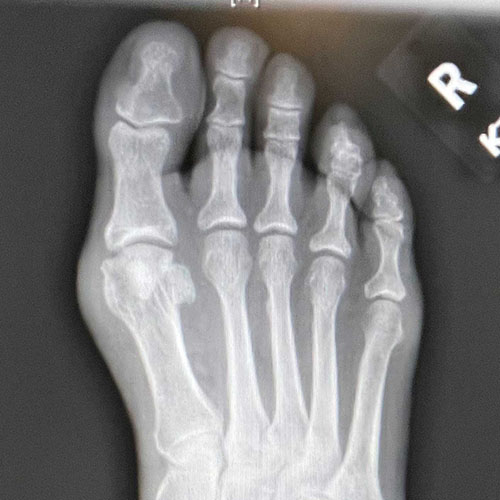
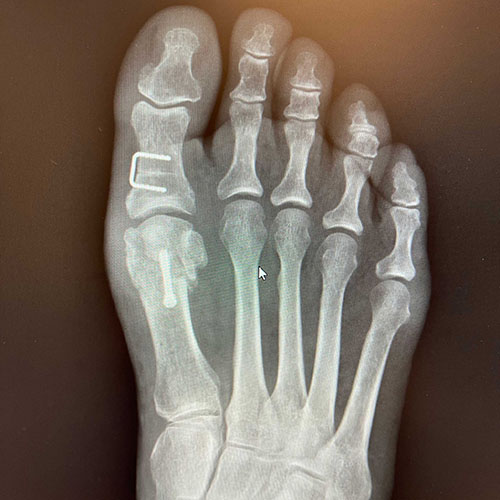
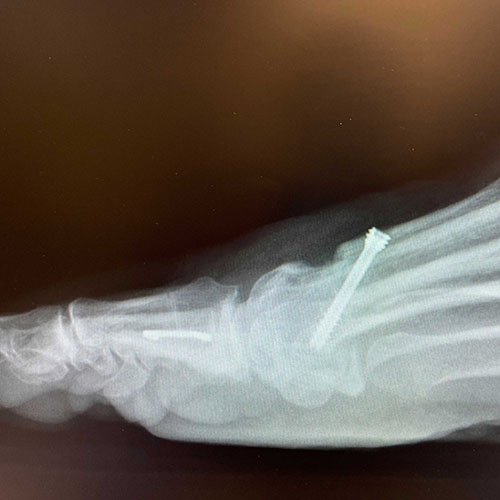
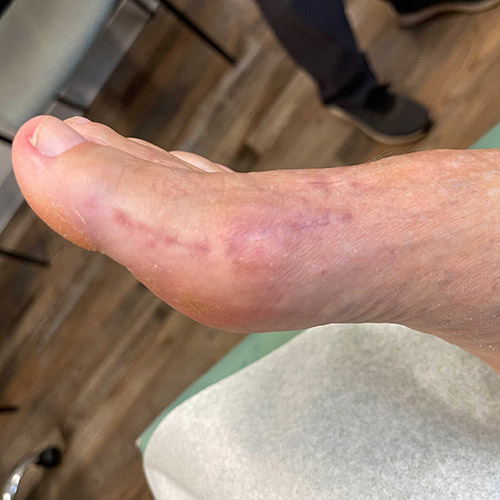
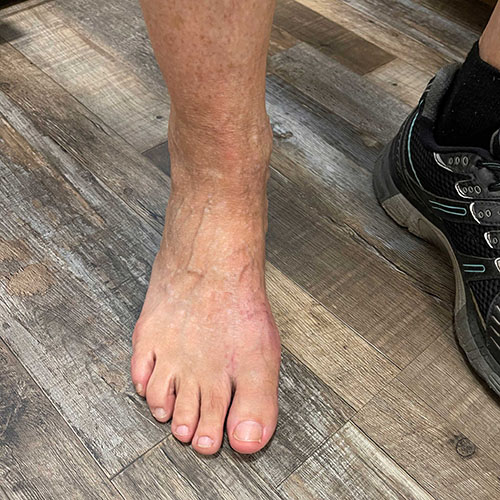
Aspen Orthopedic Specialists Delivers Excellence Every Step of the Way
Our foot doctors and all our orthopedic doctors at Aspen Orthopedic Specialists are specialty-trained medical experts who understand your concerns, can answer your questions, and know how to apply their special expertise to help you. With years of training and experience in foot and ankle care, our board-certified podiatric surgeons, Dr. Sean Wilson and Dr. Robby Amiot, have the expertise to help you return to living the life you love.
Our foot and ankle specialists at our Foot & Ankle Center are passionate about helping patients relieve their pain and get back to work and activity. Dedicated to earning the trust and confidence of every patient to provide the right solution, our podiatrists listen closely to each patient in order to figure out a plan that will accomplish his or her treatment goal.
Appointment access within 24 and 48 hours is available at our Brookfield, New Berlin, or Oak Creek locations. We encourage you to ask any questions you have about your care during your visit with our podiatrists.
To schedule a patient consultation with one of our Foot & Ankle Center doctors, please call (262) 383-4293 or request an appointment online.